How Hybrid Healthcare Promotes Nutritional Awareness in Seniors

The Rising Importance of Nutritional Awareness in an Aging Population
As the population of adults aged 65 and over continues to grow rapidly, particularly those over 85, there is an urgent need for innovative approaches to promoting nutritional awareness among seniors. Proper nutrition is a cornerstone of healthy aging and the prevention of chronic, diet-related diseases such as cardiovascular conditions. Hybrid healthcare models that combine digital tools with traditional care offer promising pathways to support seniors in managing their nutritional health effectively. This article explores how hybrid healthcare promotes nutritional awareness in seniors through comprehensive programs that integrate education, personalized care, and community support.
Understanding the Nutritional Challenges of an Aging Population
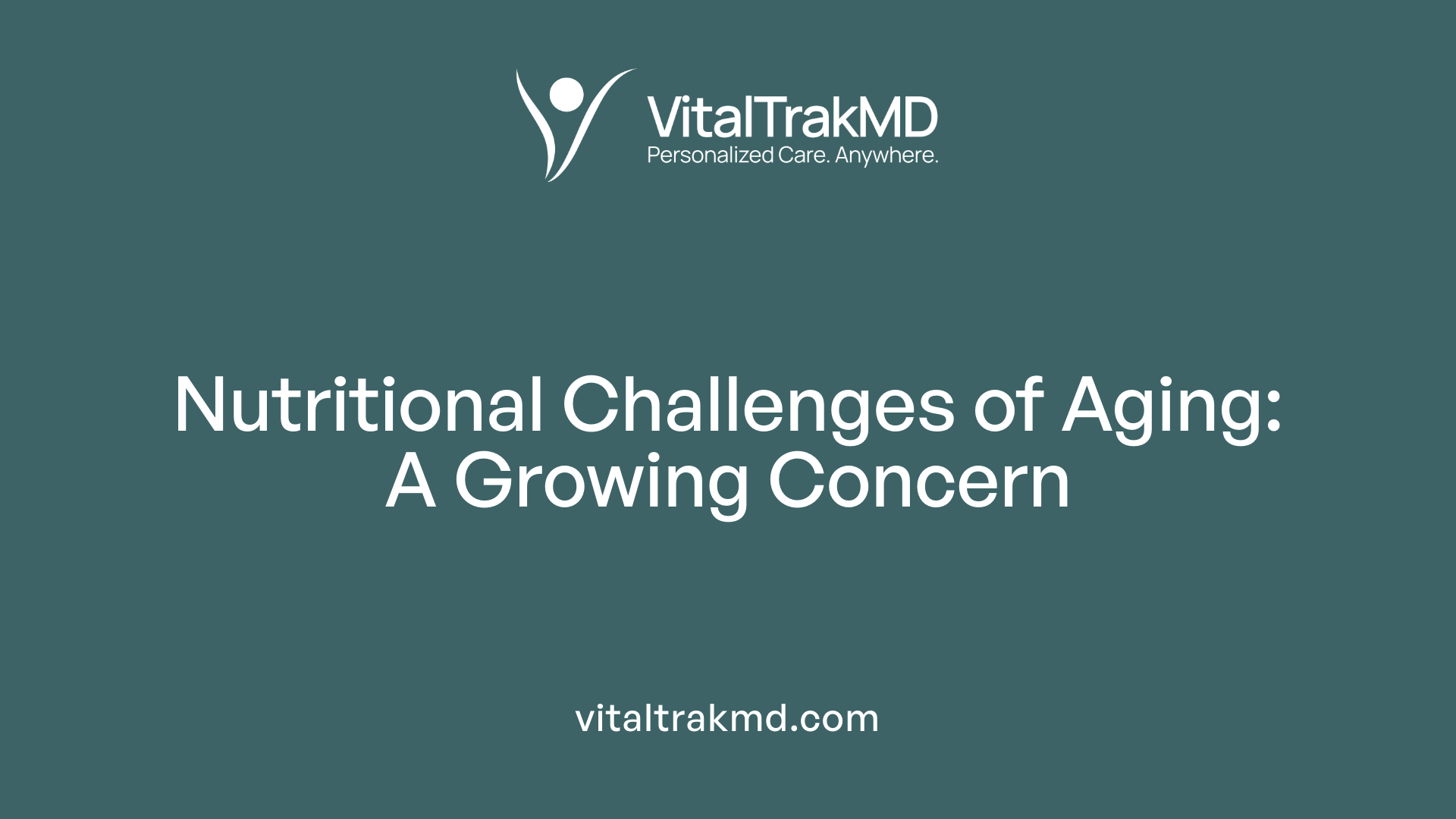
Demographic shifts in older adult populations
The older adult population in the U.S. is growing rapidly, with the number of individuals over 65 expected to more than double in the next 20 years. Those aged over 85 will more than triple, creating an urgent need for targeted nutrition strategies to support healthy aging.
Physiological and metabolic diversity among seniors
Older adults are not a homogeneous group; they vary widely in their physiological and metabolic states. Current federal nutrition programs often fail to differentiate these diverse needs, which can limit their effectiveness. Tailored nutrition plans must account for this diversity to prevent or delay age-related diseases.
Cultural and social diversity impacting nutrition
The aging population is increasingly diverse not just biologically but also culturally and socially. Nutrition and wellness programs must incorporate cultural preferences and address social determinants of health to be truly effective.
What are the key components of effective wellness programs?
Effective wellness programs are comprehensive and tailored to participant needs. Beyond physical activity and nutritional guidance, successful programs include mental health support, regular screenings, and critical behavior change education. These elements foster lasting healthy habits, which are essential for managing chronic conditions and promoting well-being in seniors.
The Role of Nutrition in Healthy Aging
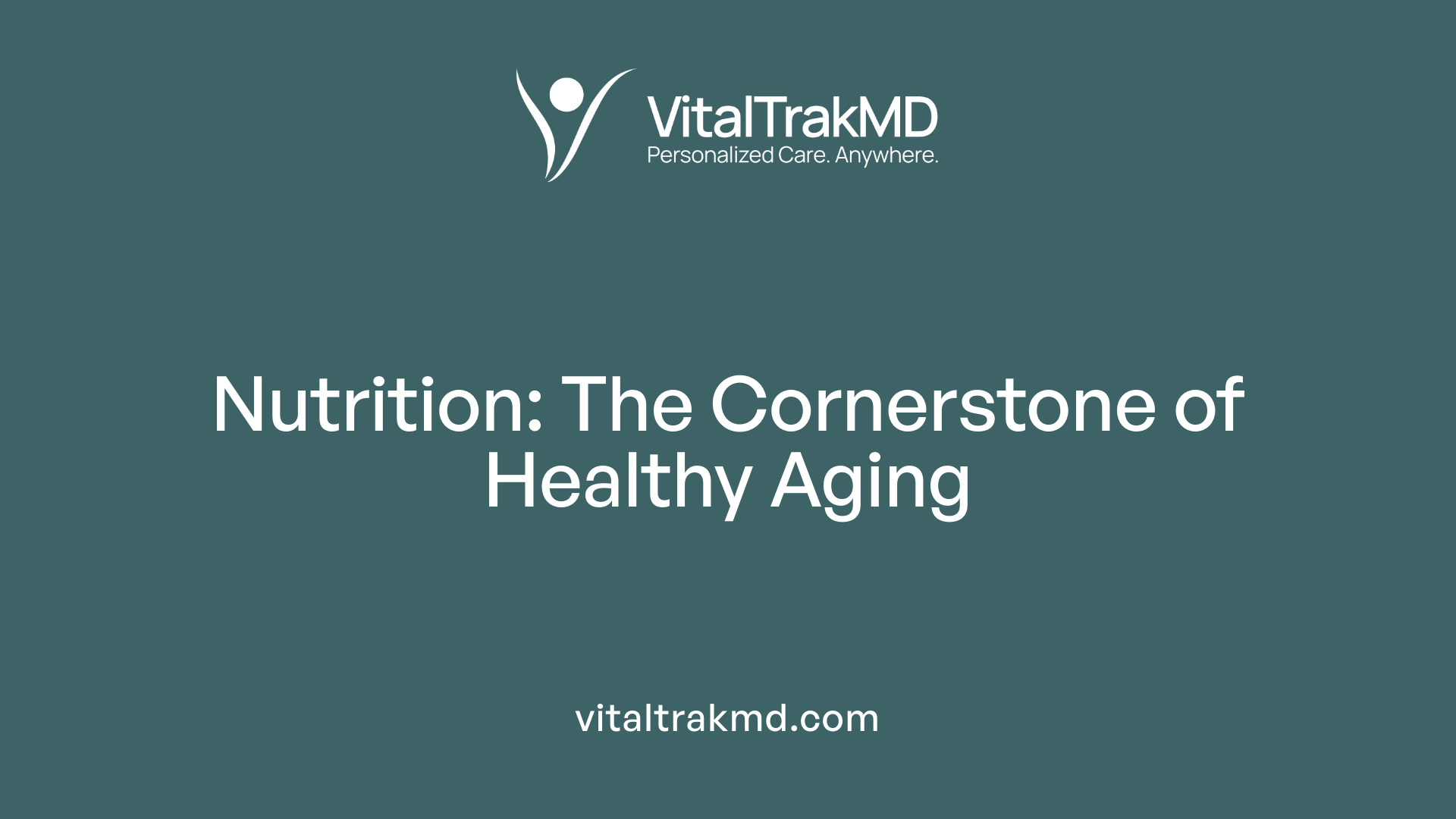
How Does Nutrition Help Prevent and Delay Age-Related Diseases?
Proper nutrition plays a pivotal role in healthy aging by preventing or delaying the onset of age-related diseases. Nutrient-rich diets support immune function, reduce inflammation, and enhance metabolic health, which collectively help maintain physical and cognitive function longer into old age. Improved diet quality is linked to lower risks of chronic conditions such as cardiovascular disease, diabetes, and obesity that typically become more prevalent with aging.
What Advances Have Been Made in Understanding Nutrition's Impact on Longevity and Health?
Scientific understanding of nutrition's contribution to longevity has expanded significantly. Research now highlights not only the types of nutrients but also the timing and patterns of eating as important factors influencing healthspan. Studies emphasize the importance of tailored nutrition strategies considering individual physiological and metabolic changes that occur with aging.
Additionally, recognition of diverse cultural and social backgrounds within aging populations has underscored the need for personalized and culturally sensitive nutrition programs. Efforts include addressing health disparities and social determinants of health through integrated community interventions, supported by models that promote person-centered care and health literacy.
Ongoing research and multidisciplinary workshops have identified critical gaps, encouraging development of more precise dietary guidelines and interventions geared to optimize nutrition's role in supporting healthy aging for diverse populations.
Limitations of Current Federal Nutrition Programs for Seniors
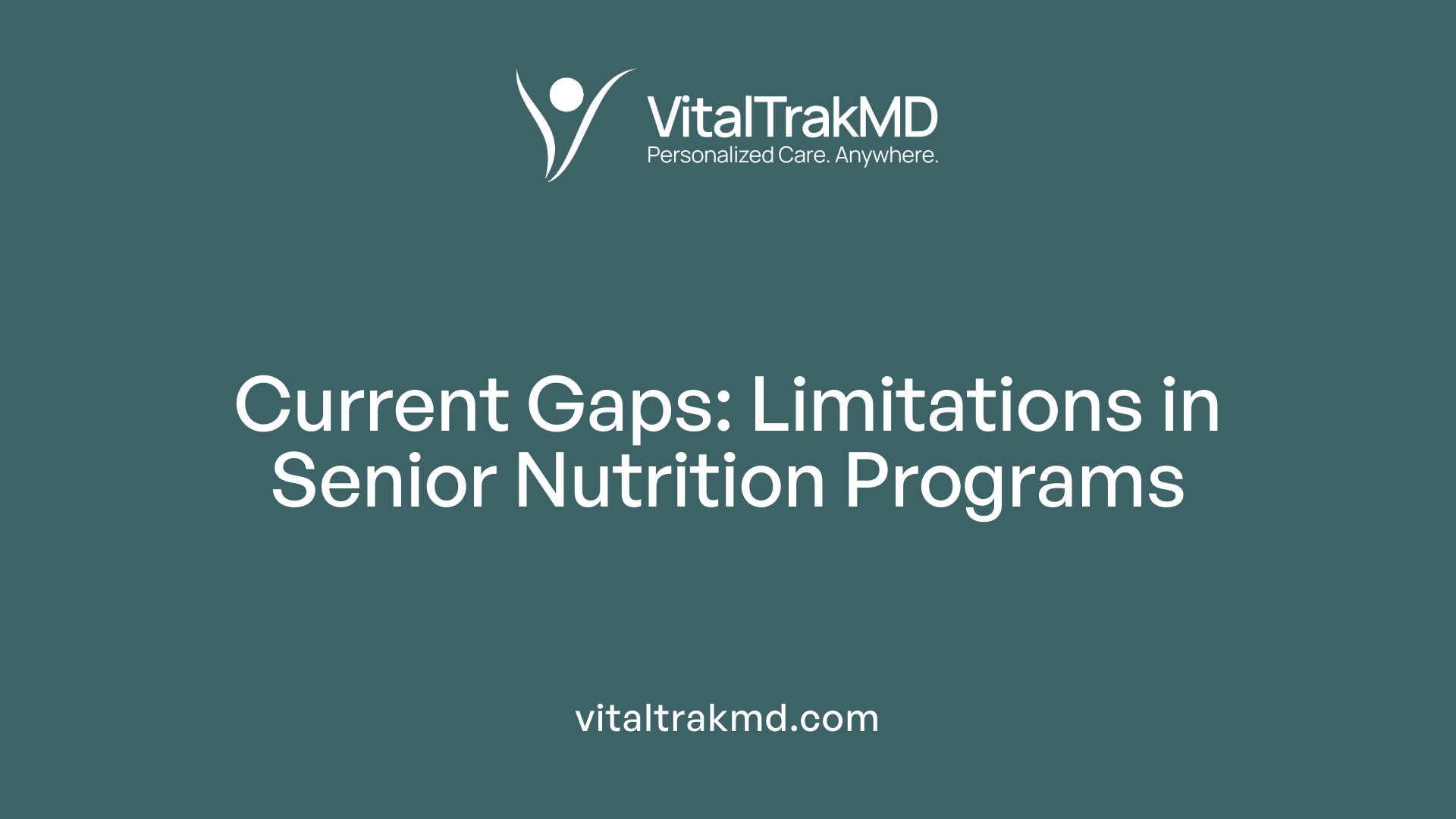
Lack of Differentiation for Diverse Physiological and Metabolic Needs
Current federal nutrition programs often treat the older adult population as a homogeneous group, failing to address the significant variations in physiological and metabolic states that exist among seniors. This one-size-fits-all approach does not adequately accommodate individual nutritional requirements that vary with age, health status, and chronic conditions, potentially limiting the effectiveness of such programs in promoting healthy aging.
Need to Consider Cultural Preferences and Social Determinants
The older adult population is increasingly diverse culturally and socially. Federal nutrition initiatives frequently overlook the importance of cultural dietary preferences and the impact of social determinants of health, such as socioeconomic status and community resources. Incorporating these factors is essential to designing nutrition strategies that are accessible, acceptable, and effective for varied senior populations. Addressing cultural diversity and social context can improve engagement and outcomes in nutrition and wellness programs for older adults.
Introducing Hybrid Healthcare: Combining Teach-Back Method and Digital Education
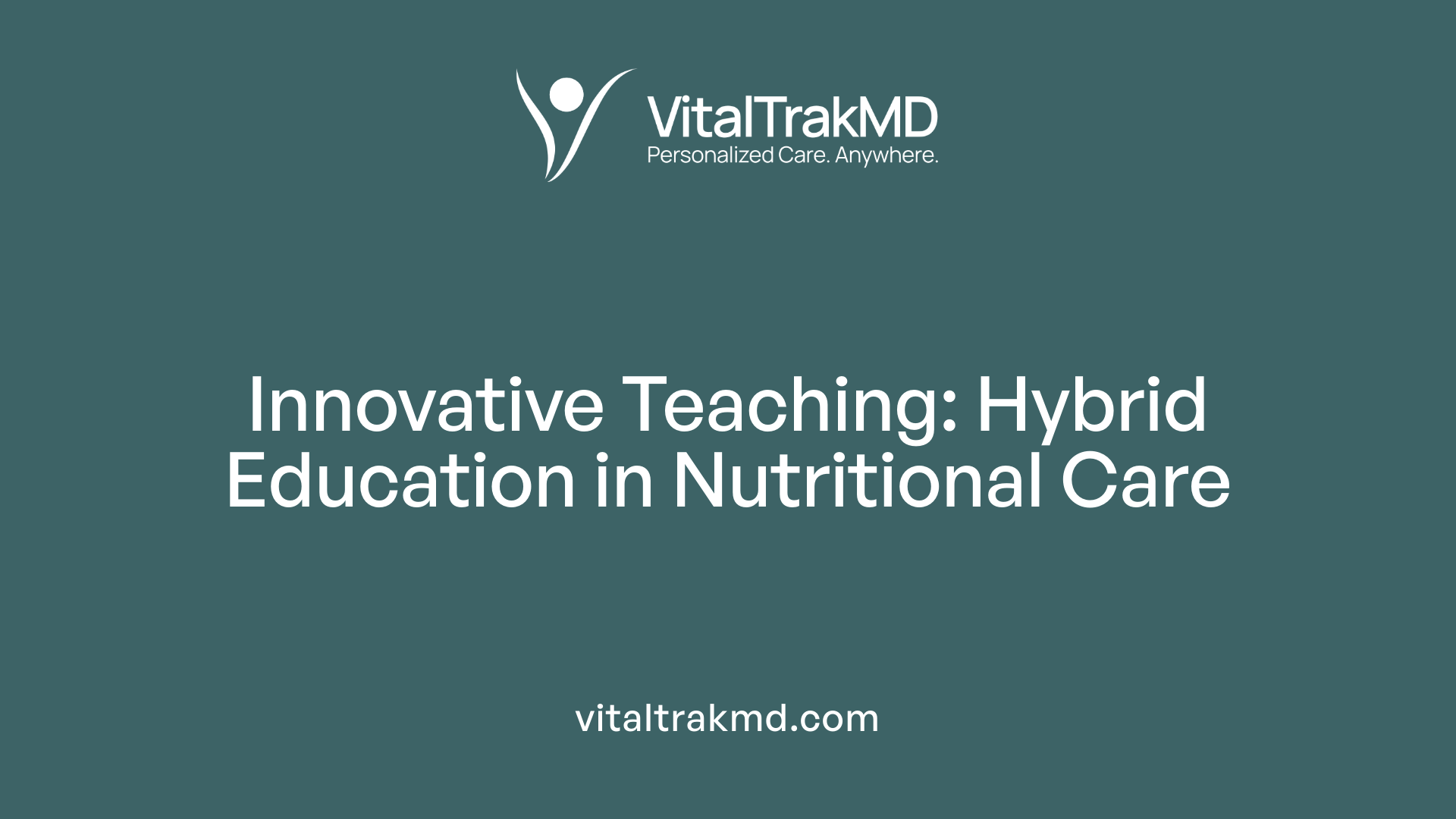
What is the Teach-Back Method?
The Teach-Back method is a communication strategy used by healthcare professionals to confirm that patients understand the information provided to them. After explaining a health-related concept or instruction, the provider asks the patient to repeat the information in their own words. This approach encourages active participation and ensures comprehension, which is critical for managing chronic conditions like diabetes or hypertension.
How Does Digital Education Complement Teach-Back?
Digital education utilizes technology such as apps, videos, and online platforms to deliver personalized health information conveniently and repeatedly. When combined with Teach-Back, digital tools reinforce learning beyond face-to-face sessions by allowing patients to revisit content at their own pace, promoting better retention and application of knowledge.
Why Use a Hybrid Program for Nutritional Self-Care?
Integrating Teach-Back with digital education creates an effective hybrid self-care program. This synergy helps patients better understand and maintain healthy nutrition habits over time. A randomized controlled trial involving 150 chronic condition patients showed significant and lasting improvements in nutritional self-care scores when this hybrid method was applied.
Participants demonstrated marked enhancements in diet quality, with unhealthy dietary patterns dropping from nearly 99% to around 49%, and healthy diet adherence increasing to over 13% after 12 months. This improvement in nutritional behavior also correlated with reductions in cardiovascular risk factors such as blood pressure, blood glucose, and BMI.
The Lasting Benefits of Hybrid Education
The sustained behavioral changes highlight the strength of combining interactive communication with accessible digital resources. This approach addresses barriers to understanding and supports continuous engagement, critical factors in managing chronic diseases that often require lifestyle modifications.
By embedding hybrid education programs into health promotion strategies, healthcare systems can better support patients in achieving and maintaining beneficial self-care practices, ultimately improving long-term health outcomes.
Evidence from Randomized Controlled Trials Supporting Hybrid Healthcare in Nutrition

How was the study designed to evaluate nutritional self-care improvements?
A rigorous randomized controlled trial was conducted involving 150 patients suffering from chronic conditions such as hypertension, diabetes, and obesity. This study design ensures a high level of evidence for assessing the effectiveness of the intervention.
What sustained changes occurred in nutritional self-care scores?
Participants who received the hybrid self-care education program—combining the Teach-Back method with digital education—showed significant increases in their nutritional self-care scores after the intervention. Remarkably, these improvements were maintained steadily over a 12-month follow-up period, indicating lasting behavioral change in managing their nutrition.
How did diet quality improve over the 12-month period?
There were notable enhancements in diet quality among participants. The proportion of patients characterized by unhealthy diets dropped dramatically from 98.67% to 49.34%. Additionally, adherence to healthy dietary patterns increased from 0% initially to 13.33% after 12 months. Such results highlight the positive impact of hybrid education programs on dietary behavior.
How can wellness programs aid in weight loss?
Wellness programs facilitate weight loss by encouraging healthier eating habits, including greater consumption of fruits and vegetables, and promoting physical activities such as walking groups. These interventions reinforce positive lifestyle changes, which contribute to better management of weight and related health outcomes.
Clinical Benefits Observed from Nutritional Improvements in Hybrid Programs
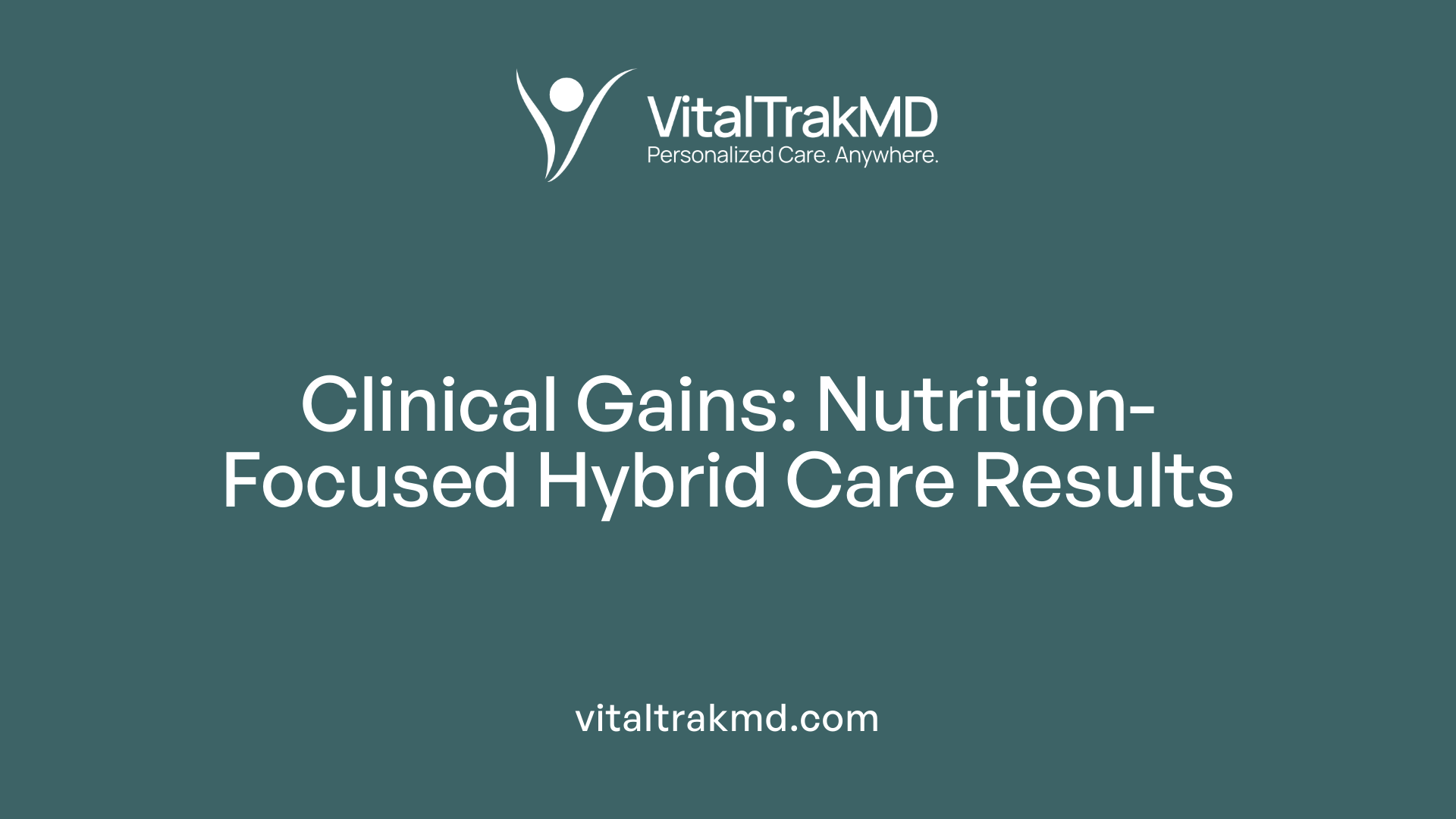
What Are Some Effective Care Programs for Long-Term Health Management?
Effective care programs for long-term health management often combine personalized education, continuous support, and integrated care strategies. One notable example is a hybrid self-care education program that merges the Teach-Back method with digital education tools. This approach empowers patients, especially those with chronic conditions like hypertension, diabetes, or obesity, to maintain sustained nutritional self-care.
Reductions in Blood Pressure, Fasting Glucose, and BMI
In a randomized controlled trial involving 150 patients with chronic diseases, participants who underwent the hybrid program exhibited significant clinical improvements. Over a 12-month period, notable reductions were seen in:
- Systolic and diastolic blood pressure
- Fasting blood glucose levels
- Body Mass Index (BMI)
These changes indicate meaningful management of key health parameters linked to chronic illness.
Impact on Cardiovascular Risk Factors and Chronic Disease Management
The improvements in cardiovascular risk factors suggest the intervention’s capability to reduce the risk of heart disease and related complications. Post-intervention, the proportion of patients with unhealthy diets dropped dramatically from 98.67% to 49.34%, while adherence to healthy diets increased from 0% to 13.33%.
Such nutrition-centered hybrid programs contribute not only to better clinical markers but also to sustained behavioral changes, proving valuable for managing chronic diseases associated with poor diet, including cardiovascular diseases (CVDs). These findings support integrating digital education and follow-up into health promotion for long-term benefits.
| Aspect | Description | Impact on Health |
|---|---|---|
| Program Type | Hybrid self-care education combining Teach-Back & digital tools | Improves nutritional self-care sustainably |
| Clinical Outcomes | Reduced blood pressure, fasting glucose, BMI | Lowers cardiovascular risks and manages chronic diseases |
| Dietary Changes | Unhealthy diets decreased; healthy diets adherence increased | Supports long-term healthy behaviors |
| Chronic Disease Focus | Hypertension, diabetes, obesity | Enhances patient empowerment and health outcomes |
How Health Literacy Promotion Empowers Seniors in Nutritional Self-Care
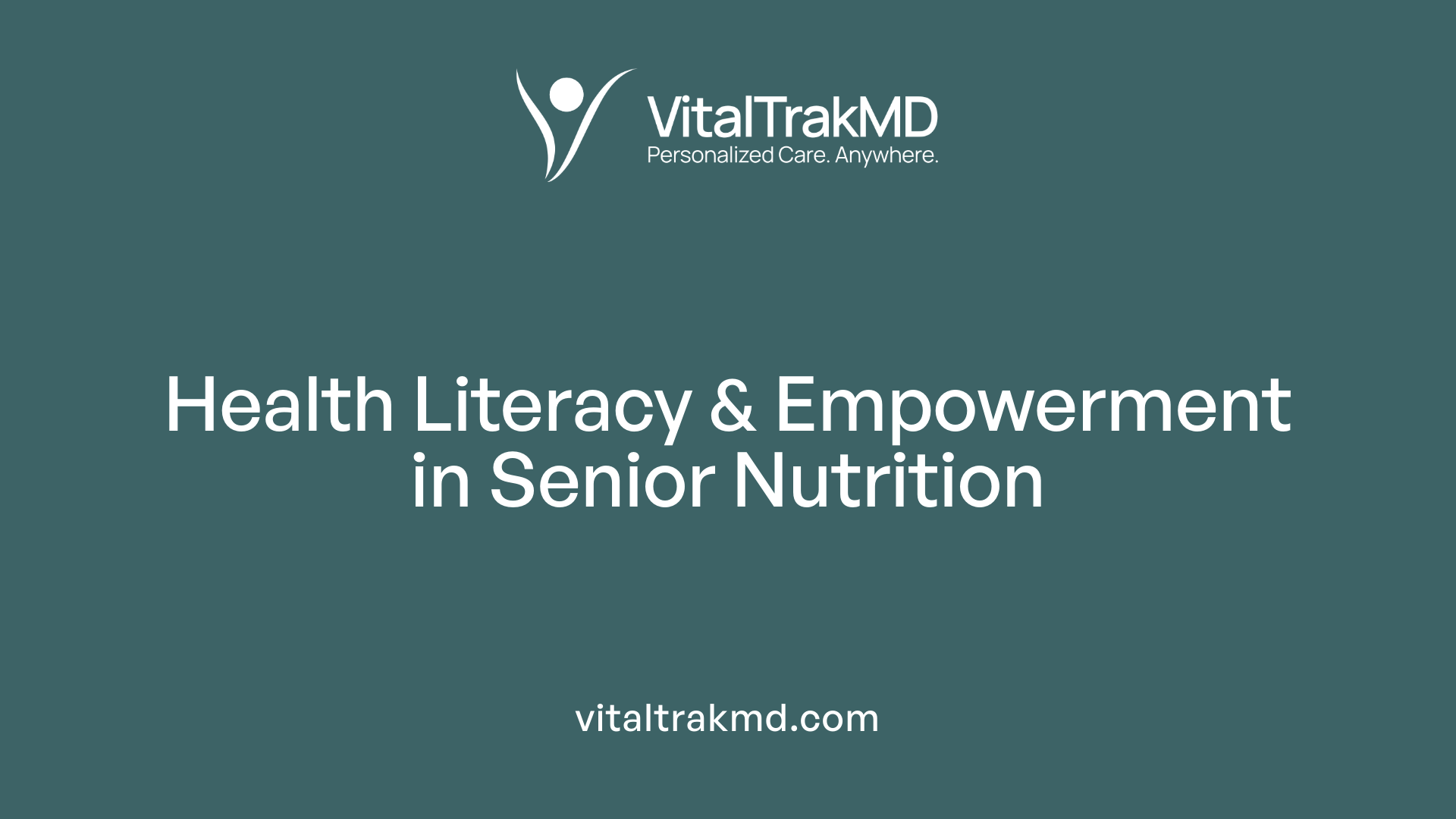
Community-wide Information Dissemination
An essential aspect of promoting health literacy among seniors involves sharing nutrition and wellness information at the community level. Programs like HWePS implement widespread communication strategies tailored to reach diverse groups of older adults, especially those in urban and low-income areas. This approach ensures that accurate, age-appropriate nutritional guidance is accessible to many individuals, helping bridge gaps caused by cultural and social diversity.
Self-Assessments to Increase Engagement and Knowledge
Self-assessment tools are incorporated within these programs to actively engage seniors in their nutritional health. By allowing individuals to evaluate their own dietary habits and health status, self-assessments enhance personal awareness and encourage proactive self-care behaviors. This empowerment fosters motivation to improve diet quality and maintain healthier lifestyles, critical for managing chronic conditions common among older adults.
Role in Fostering Health-Related Quality of Life
Improving health literacy through these methods directly influences seniors' health-related quality of life (HRQoL). Validated quality measures, like the EQ-5D-3L used in studies, demonstrate that better nutrition knowledge and self-care skills contribute to improved self-rated health. Enhanced HRQoL is linked with reductions in cardiovascular risk factors and sustained positive dietary changes, highlighting how health literacy promotion supports long-term well-being in aging populations.
Role of Nurse Coaching and Peer Support in Personalized Care Management
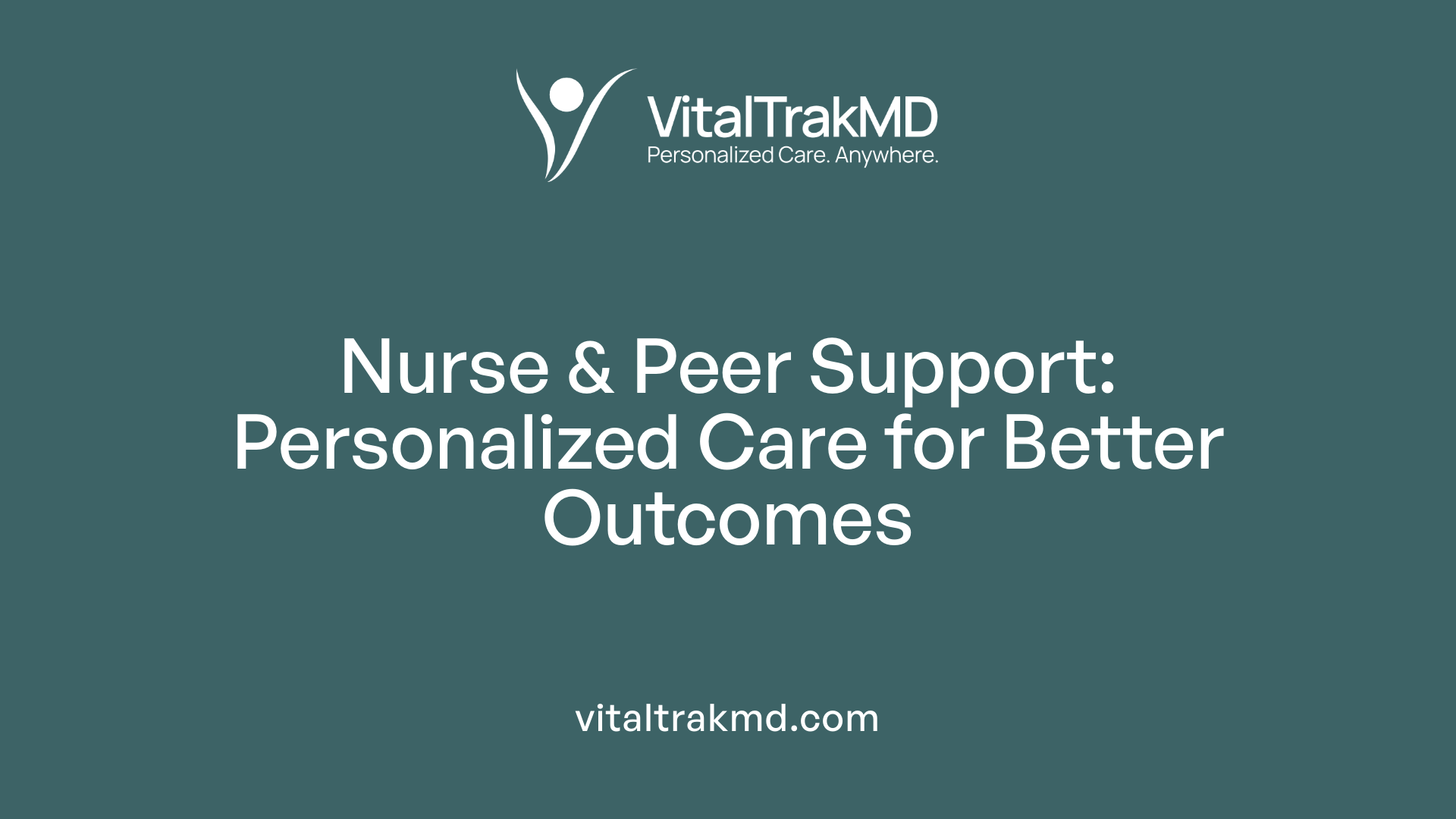
Personalized care through nurse coaching
Nurse coaching forms a cornerstone of effective wellness programs by providing tailored guidance and education to individuals. Through one-on-one interactions, nurses help patients understand their unique health needs and develop practical self-care strategies, including nutritional improvements critical for managing chronic conditions.
Social support from peer groups
Peer support complements nursing care by creating a network of encouragement and shared experiences. Group members motivate one another, discuss challenges, and celebrate successes, which reinforces positive behaviors and reduces feelings of isolation common among older adults.
Enhancing motivation and accountability for sustained behavior change
Combining nurse coaching with peer support boosts motivation and accountability. This dual approach encourages patients to adhere to healthier lifestyles over time, as seen in programs like HWePS that showed sustained nutritional self-care improvements and clinical benefits at 12 months.
Ongoing support and accountability delivered by these components are crucial for sustained engagement in wellness programs. Emphasizing personalized attention and community strengthens the effectiveness of interventions designed to improve diet quality and manage chronic diseases in aging populations.
Community Initiatives for Healthy Living and Healthy Aging

Development of Community Resources
Community initiatives within the HWePS program focus on enhancing available resources to promote healthy living and aging. By creating supportive environments tailored to older adults’ needs, these initiatives improve access to nutrition education, physical activities, and social engagement opportunities. This approach helps address the complexity of aging in urban low-income settings by fostering readily accessible, culturally relevant health-promoting resources.
Capacity-building and Community Participation
A crucial element of these initiatives involves empowering community members by developing their skills and knowledge related to health and nutrition. Capacity-building efforts include training local volunteers and peer supporters to provide ongoing assistance, which reinforces individual self-care behaviors. Encouraging active participation from older adults ensures that programs are responsive to their preferences and promotes sustainability through peer-led support networks.
Targeting Social Determinants of Health
Addressing social determinants of health is central to the success of community initiatives. HWePS incorporates strategies to overcome barriers such as limited socioeconomic resources, cultural diversity, and social isolation. By involving the community in planning and decision-making, the program enhances social cohesion and promotes equitable access to nutrition and wellness services, thereby reducing health disparities among aging populations.
Leveraging Information and Communication Technology (ICT) Systems in Hybrid Healthcare

ICT for Communication and Data Management
Information and Communication Technology (ICT) systems play a crucial role in hybrid healthcare programs like HWePS for seniors. These systems enable seamless communication across various components of the program, including health literacy promotion, personalized care management, and community initiatives. By integrating digital platforms, the program efficiently collects and manages health data, allowing care providers to access up-to-date patient information instantly.
Enhancing Coordination Among Care Teams and Seniors
ICT tools facilitate better coordination among multidisciplinary care teams—such as nurses, peer supporters, and healthcare professionals—and the older adults themselves. This connectivity supports real-time sharing of health status, self-care progress, and intervention adjustments. Seniors, particularly those in urban low-income settings, benefit from this approach as it empowers them to actively participate in their health management with continuous support.
Facilitating Follow-Up and Monitoring
Effective follow-up and monitoring are vital for sustaining long-term behavioral change in chronic disease management. ICT systems enable regular remote check-ins, reminders, and data tracking, ensuring that nutritional self-care improvements and cardiovascular risk reductions observed post-intervention are maintained. This technology-enhanced approach addresses challenges posed by traditional in-person programs, offering scalability and accessibility for diverse older adult populations.
Together, these ICT applications form the backbone of hybrid healthcare interventions, strengthening engagement, personalizing care, and promoting sustained wellness among aging individuals managing chronic conditions.
Measuring Success: Self-Rated Health and Health-Related Quality of Life Metrics
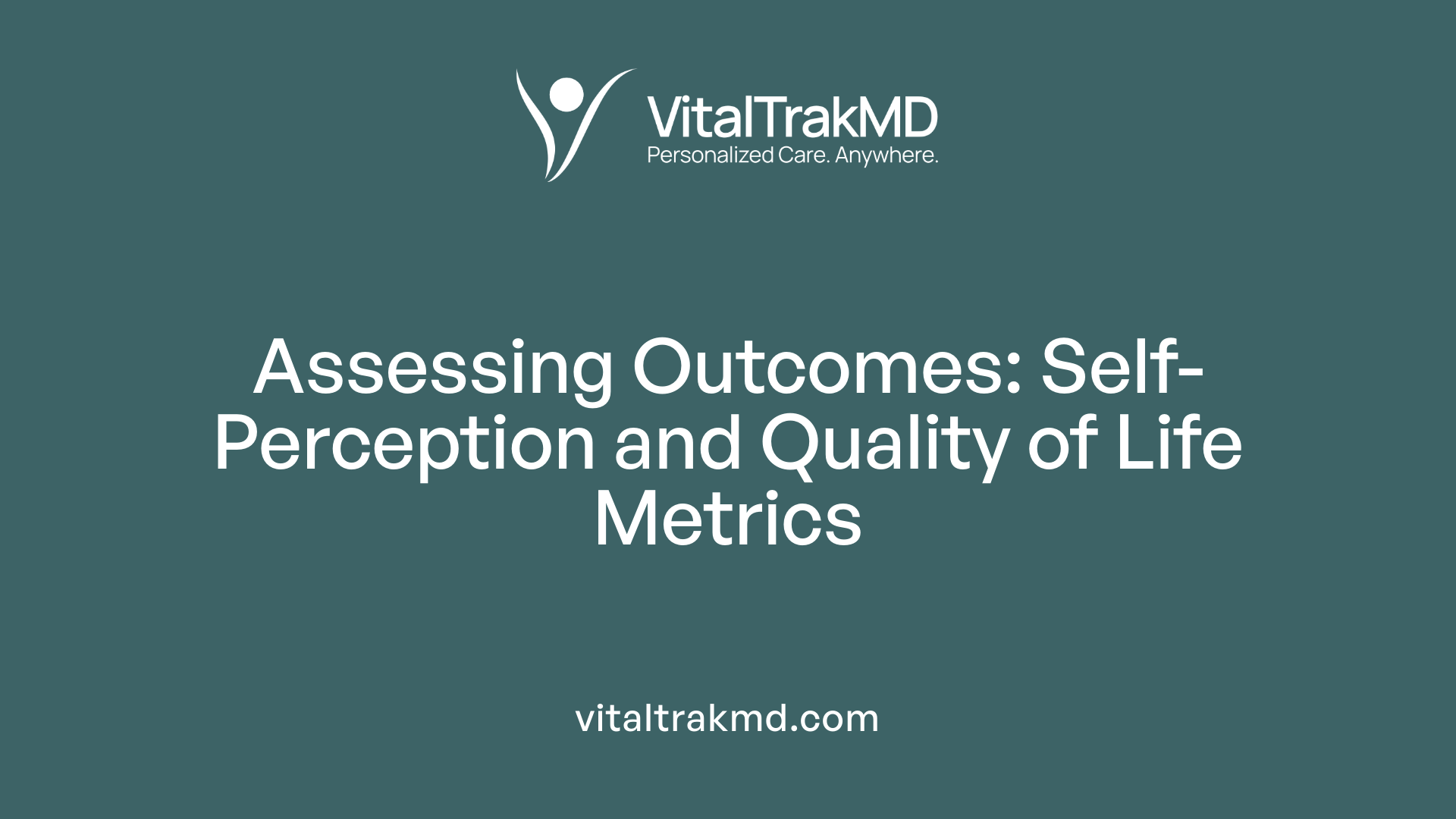
How Are Self-Rated Health and HRQoL Measured in Nutrition Programs for Seniors?
In evaluating nutrition and wellness programs like HWePS (Health and Wellness Program for Seniors), researchers rely on validated tools such as the EQ-5D-3L to assess health-related quality of life (HRQoL). This commonly used instrument measures five dimensions: mobility, self-care, usual activities, pain/discomfort, and anxiety/depression. By capturing these facets, EQ-5D-3L provides a comprehensive view of an individual's perceived health status.
Why Are Subjective and Objective Outcome Measures Both Important?
Subjective measures like self-rated health offer insight into how individuals perceive their overall wellbeing and satisfaction with life, which can influence engagement in self-care behaviors. Objective markers—including improvements in nutritional self-care scores, diet quality, and reductions in cardiovascular risk factors—complement this by confirming physiological and behavioral changes. Together, they paint a holistic picture of program effectiveness.
How Is Program Effectiveness Evaluated Over Time?
Longitudinal assessment over a 12-month period is crucial to determine whether improvements are sustained. In interventions studied, nutritional self-care scores and diet quality improvements persisted at 12 months, indicating lasting behavioral changes. Similarly, declines in blood pressure, blood glucose, and BMI observed after one year demonstrate clinical benefit. Using both subjective tools like EQ-5D-3L and objective data over time helps researchers and practitioners monitor progress and adjust strategies accordingly.
Addressing Health Disparities Through Targeted Nutrition Interventions

What are the current research gaps in nutrition and healthy aging?
A recent multidisciplinary workshop highlighted that significant research gaps exist in understanding how nutrition influences healthy aging. These gaps include how different dietary patterns affect age-related diseases, optimal timing for nutrition interventions, and how to tailor programs to address health disparities among diverse older populations.
Why is timing and targeting of dietary interventions important?
Nutrition interventions need to be carefully timed and targeted to be effective. Evidence shows that early and sustained nutrition education can lead to long-term improvements in health markers such as blood pressure and blood glucose levels. Moreover, a hybrid approach combining personalized nurse coaching with digital tools, as demonstrated in chronic condition management, can sustain self-care behaviors over 12 months or longer.
How can culturally sensitive programming improve nutrition outcomes?
The older adult population is increasingly diverse culturally and socially. Nutrition programs that fail to consider cultural preferences and social determinants risk being less effective. Tailoring interventions to respect cultural food choices and social contexts can enhance engagement and improve dietary adherence, ultimately contributing to healthier aging across different communities.
This evidence underscores the need for multi-level, culturally informed nutrition strategies that address social determinants, personalize timing, and close research gaps to better meet the needs of aging populations, particularly in underserved urban communities.
Tailoring Nutrition Strategies to the Physiological Diversity of Older Adults
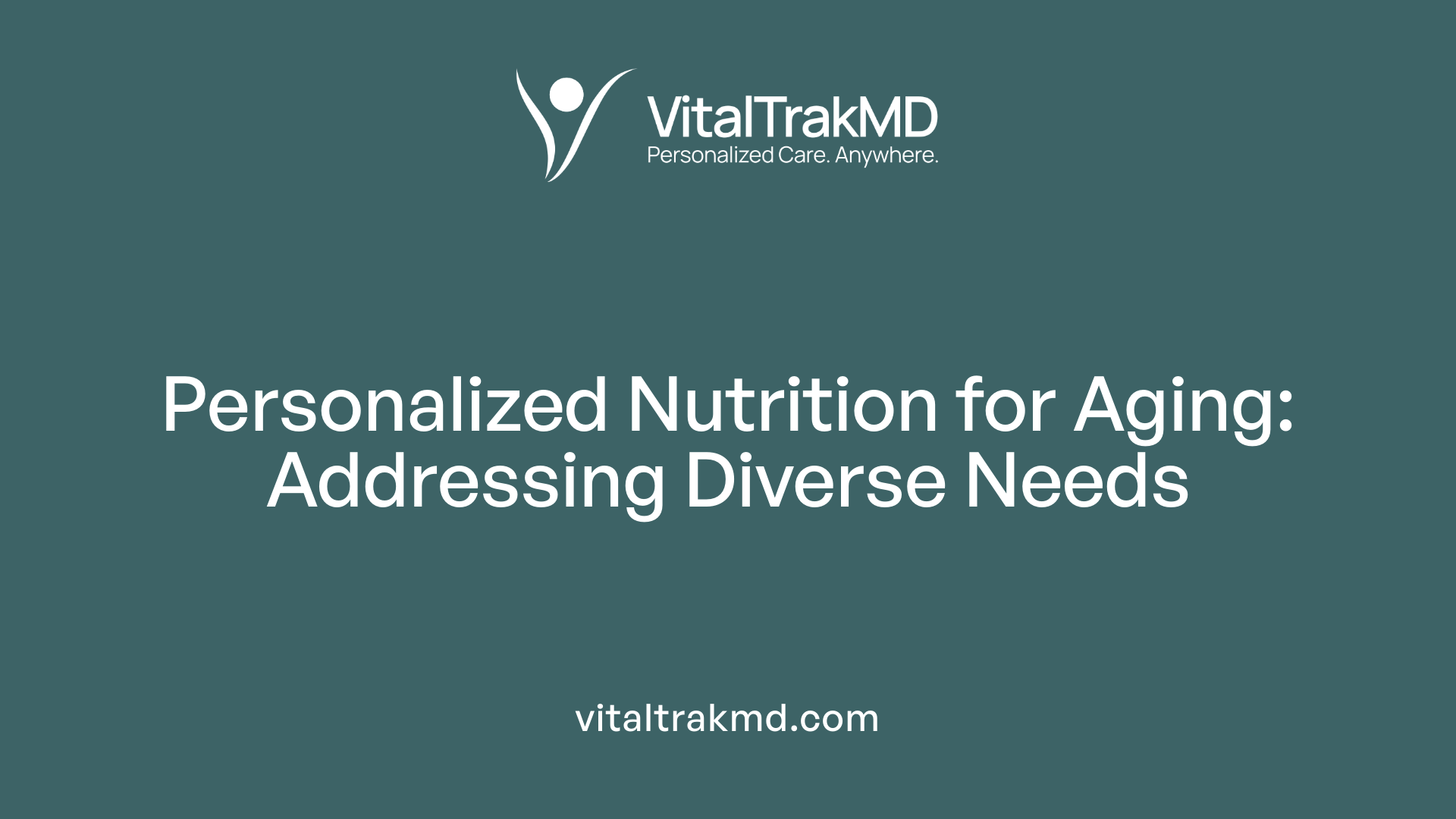
Recognizing Varying Metabolic Conditions in Seniors
Older adults represent a highly diverse group, not just culturally and socially but also in their physiological and metabolic states. This diversity impacts nutritional needs significantly. Factors such as changes in metabolism, chronic health conditions like diabetes and hypertension, and alterations in nutrient absorption mean that a one-size-fits-all approach to nutrition often falls short. Federal nutrition programs typically lack this differentiation, overlooking the nuanced needs within this population.
Adapting Programs to Individual Needs
To address these challenges, nutrition programs must become more personalized. Integrating digital education tools and self-care support, such as the hybrid programs combining Teach-Back methods with technology, shows promise in sustaining nutritional improvements over the long term. Programs like HWePS also highlight the effectiveness of multi-level interventions that include personalized care management with nurse coaching and peer support, adapting to the unique lifestyle and health profiles of seniors.
Challenges and Opportunities in Personalized Nutrition
While tailoring nutrition to individual metabolic conditions presents challenges—such as complexity in program design and resource allocation—it offers substantial benefits. Customized interventions can lead to significant improvements in diet quality and reductions in cardiovascular risk factors, as evidenced by recent studies. Moreover, considering social determinants of health and cultural preferences in program development enhances relevance and uptake among diverse senior populations. With the rapid growth of the older adult demographic, especially those over 85, these personalized strategies are critical for promoting healthy aging and preventing age-related diseases through improved nutrition.
The Synergy of Hybrid Healthcare with Chronic Disease Management Programs
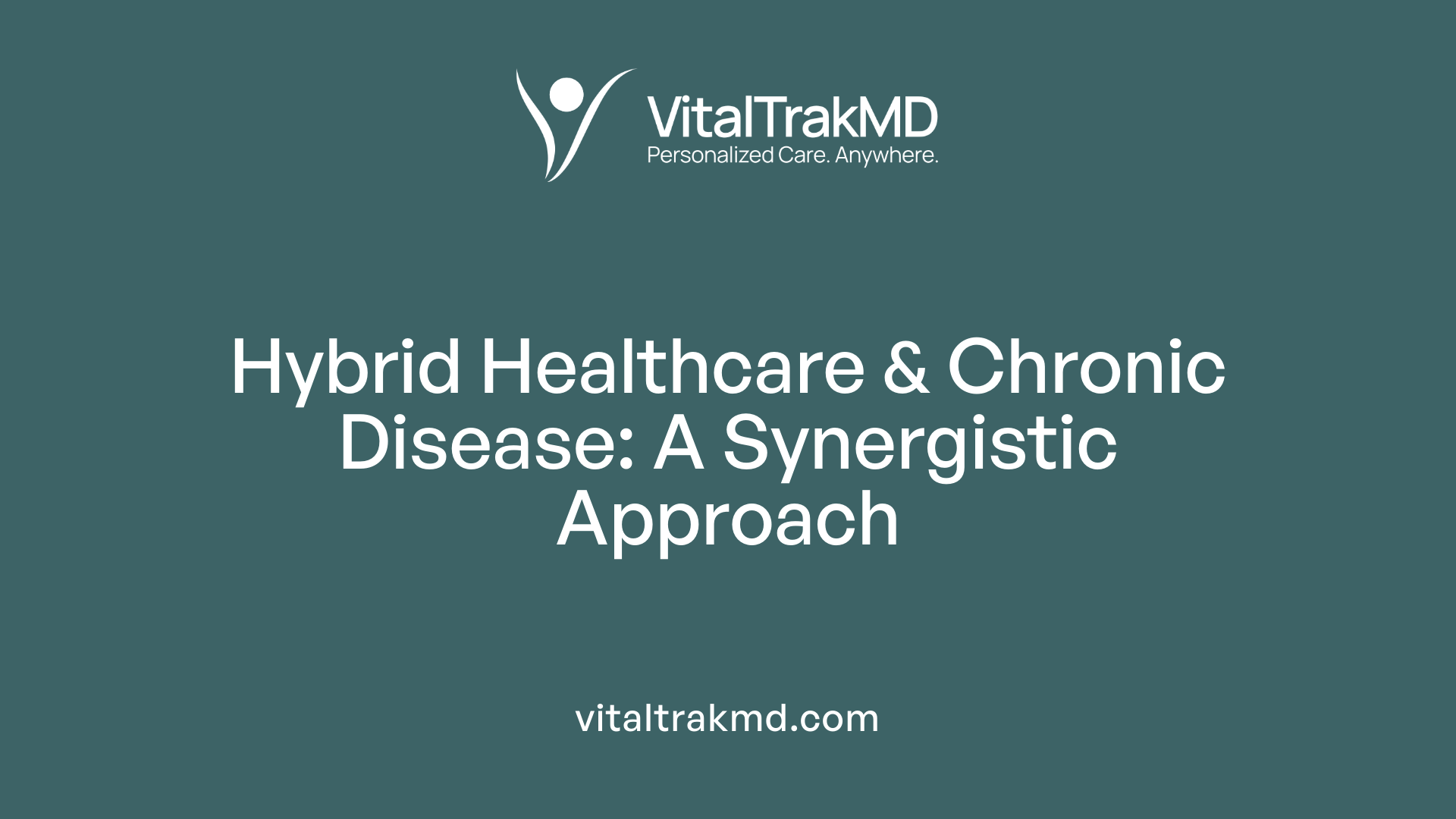
Integration of nutritional self-care in chronic disease management
A hybrid self-care education program that combines the Teach-Back method with digital education has demonstrated sustained improvements in nutritional self-care among patients with chronic conditions such as hypertension, diabetes, and obesity. This approach empowers patients to understand and actively participate in managing their nutrition, which is critical for controlling these diseases. By promoting long-term behavioral changes through continuous education and digital follow-up, patients can maintain healthier dietary habits that directly influence their disease outcomes.
Role in controlling diseases like hypertension, diabetes, and obesity
The program's effectiveness was confirmed in a randomized controlled trial with 150 participants, where those in the intervention group showed significant improvement in nutritional self-care scores lasting up to 12 months. Diet quality improved markedly: unhealthy diets decreased by nearly half, while adherence to healthy diets rose substantially. These dietary improvements contributed to significant reductions in cardiovascular risk factors, including systolic and diastolic blood pressure, fasting blood glucose levels, and BMI at one year post-intervention. These clinical benefits highlight the importance of integrating nutritional self-care within chronic disease management.
What are some effective care programs for long-term health management?
Effective long-term health management programs often incorporate regular health monitoring to provide timely feedback and intervention. Additionally, leveraging multidisciplinary healthcare teams — including nurses, dietitians, and peer supporters — enhances care coordination and patient engagement. Such teams can deliver personalized coaching and foster community support, especially when complemented by digital education tools. This hybrid approach not only sustains behavioral changes but also addresses social determinants of health through community capacity-building and participation.
Impact of Hybrid Wellness and Care Programs on Weight Management in Seniors

How do wellness and care programs contribute to overall weight management?
Wellness and care programs significantly contribute to overall weight management by incorporating a range of strategies that promote healthier behaviors. These programs often integrate personalized nutrition education, supportive coaching, and digital tools to support sustained lifestyle changes.
Promoting healthier dietary behaviors
Hybrid programs combining Teach-Back methods with digital education have demonstrated notable success in improving dietary habits among seniors. Participants show increased adherence to healthy diets, with one study highlighting a decrease in unhealthy diets from nearly 99% to about 49% over 12 months. This shift reflects enhanced nutritional self-care and better management of chronic conditions, such as obesity and hypertension.
Encouraging physical activity and monitoring progress
In addition to dietary improvements, wellness programs commonly encourage physical activity by providing tailored coaching and community engagement initiatives. Digital health platforms enable continuous monitoring and feedback, which help seniors track their progress and stay motivated, fostering sustained behavior change.
Achieving measurable reductions in BMI and waist circumference
These combined strategies translate into tangible clinical benefits. Studies have documented significant reductions in Body Mass Index (BMI), waist circumference, and other cardiovascular risk factors in older adults after participating in such programs. These measurable outcomes signify effective weight management and reduced risk of age-related diseases.
Overall, hybrid wellness interventions that integrate personalized education, technology, and community support play a vital role in helping seniors achieve and maintain healthier weights through improved nutrition and physical activity.
The Importance of Ongoing Support and Accountability in Sustained Nutritional Behavior Change
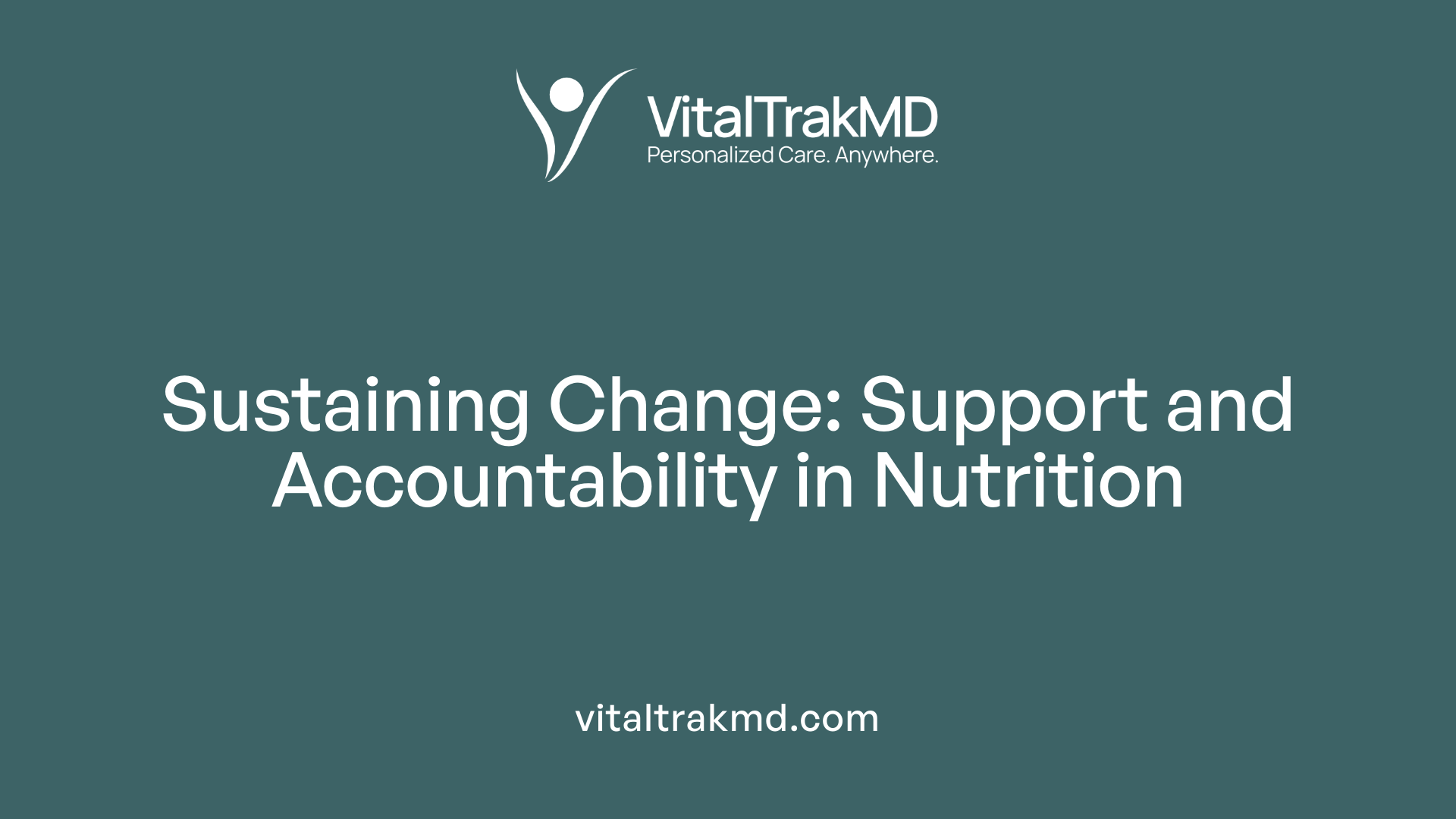
Coaching, Peer Support, and Community Engagement
Effective wellness programs often rely on continuous support systems such as coaching and peer groups. Personalized care management with nurse coaching and peer support helps individuals stay motivated and accountable. Community initiatives aimed at promoting healthy living and aging create social networks that reinforce positive behaviors.
Digital Follow-Ups and Reminders
The use of ICT systems for communication and data management enables regular digital follow-ups and reminders. These tools enhance engagement by providing timely encouragement and education, helping participants maintain nutritional improvements over the long term.
Building Environmental Support for Lasting Habits
Creating supportive environments through community resource development and capacity-building addresses social determinants of health. This approach fosters sustainable health behaviors by ensuring that individuals have access to resources and social support needed to maintain changes.
By combining coaching, peer support, digital education, and community engagement, wellness programs can provide the ongoing support and accountability essential for sustained nutritional behavior change, especially in older adults managing chronic conditions.
How Hybrid Healthcare Addresses Social Determinants of Health
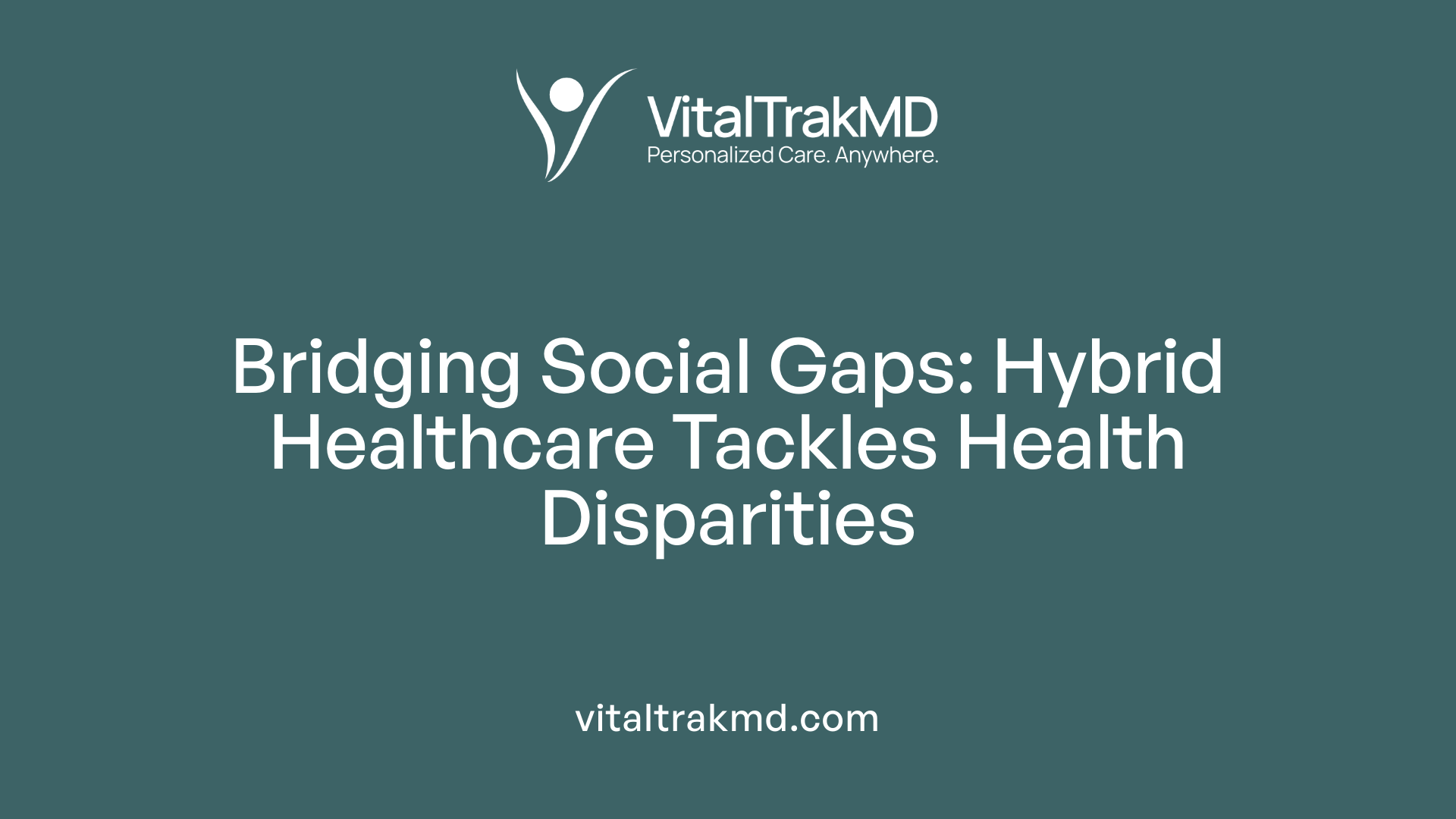
Developing Community Capacity
Hybrid healthcare programs like HWePS are designed to strengthen community resources and build local capacity for health promotion. By integrating health literacy promotion, personalized care, community initiatives, and ICT systems, these programs equip communities with tools and knowledge necessary for managing chronic diseases and encouraging healthy aging.
Facilitating Participation and Resource Access
Such interventions actively encourage community participation through self-assessments and peer support. This involvement enhances connection among seniors, fosters shared learning, and improves access to health services. The use of digital platforms streamlines communication and data management, making health resources more accessible for the urban, low-income senior populations targeted.
Addressing Socioeconomic and Cultural Barriers
The hybrid approach takes into account the diverse social and cultural backgrounds of older adults. It emphasizes culturally relevant education and helps overcome socioeconomic barriers by providing tailored support via nurse coaching and community-driven activities. This focus on social determinants helps reduce health disparities and facilitates better nutritional self-care among heterogeneous senior populations.
Case Study Focus: HWePS Program – A Model for Integrated Community Health
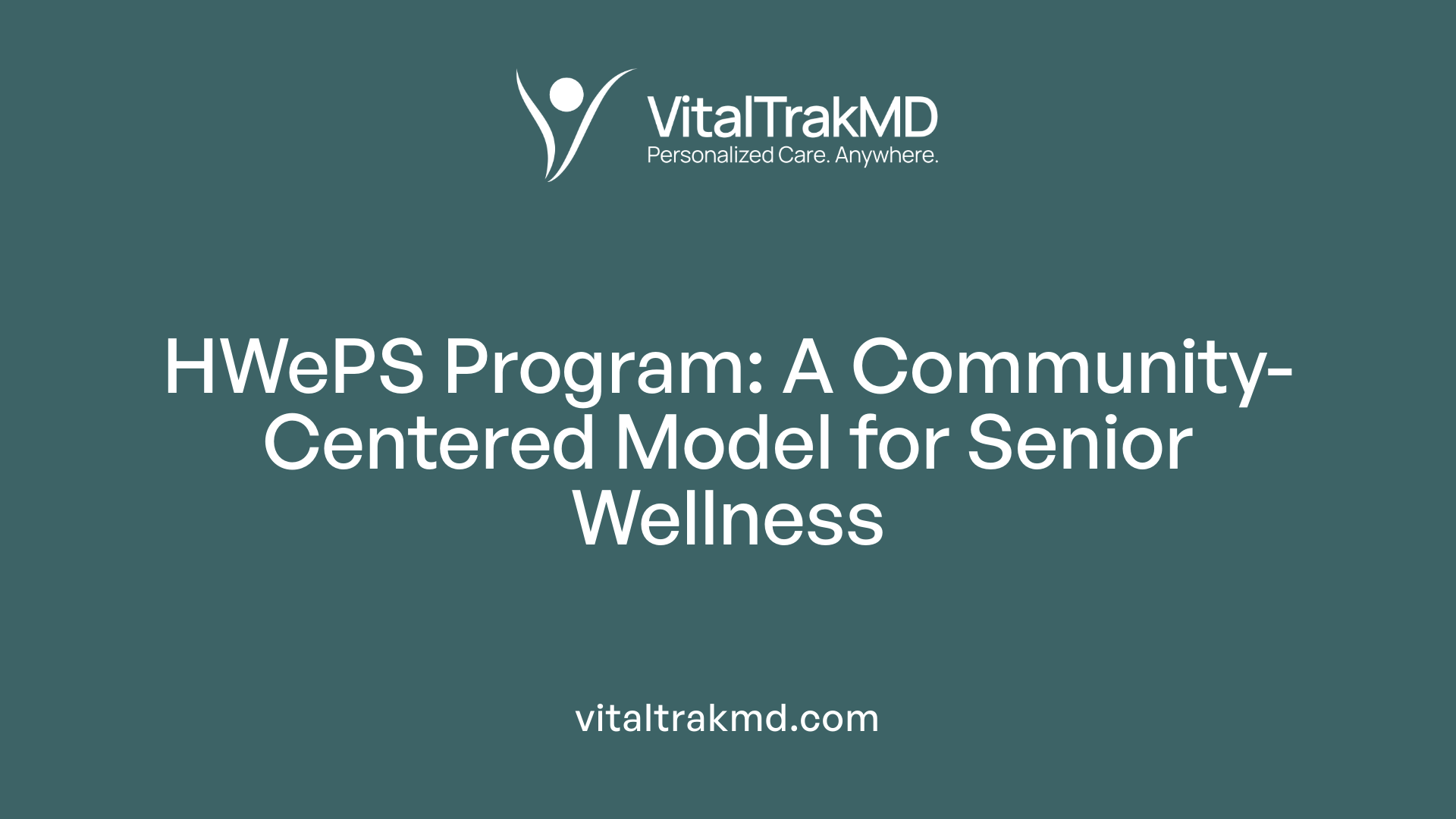
What are the components of the HWePS program?
The HWePS program is a comprehensive, multi-level intervention designed to promote health and wellness among seniors, particularly in urban, low-income communities. It consist of four main components:
- Health Literacy Promotion: Community-wide dissemination of health information coupled with self-assessments to empower seniors to understand and manage their health.
- Personalized Care Management: Nurse coaching and peer support tailored to individual needs to enhance self-care capabilities.
- Community Initiatives: Programs encouraging healthy living and active aging through social activities and skill-building.
- Information and Communication Technology (ICT) Systems: Tools for facilitating communication and managing health data effectively.
This integrated approach is guided by established health models such as the expanded chronic care model and health literacy frameworks to ensure person-centered elder care.
Who is the target population for the HWePS program?
The program specifically targets community-dwelling older adults aged 65 and over residing in urban low-income areas of Seoul, Korea. This demographic is growing and increasingly diverse, with distinct cultural and social characteristics impacting their nutritional and overall health needs. By focusing on this group, the program addresses social determinants of health through community resource development, capacity-building, and encouraging active community participation.
What outcomes does HWePS focus on?
Primary outcomes of the HWePS program include improvements in self-rated health and health-related quality of life (HRQoL). These are measured using validated tools such as the EQ-5D-3L, a standardized instrument for assessing general health status. By enhancing literacy, personalized support, and community engagement, the program aims to impact these outcomes positively over a 12-month intervention period.
The HWePS model exemplifies how integrated, technology-enhanced community health initiatives can address both clinical and social factors, fostering sustainable health improvements in vulnerable senior populations.
Future Directions: Bridging Research Gaps to Optimize Nutrition in Aging
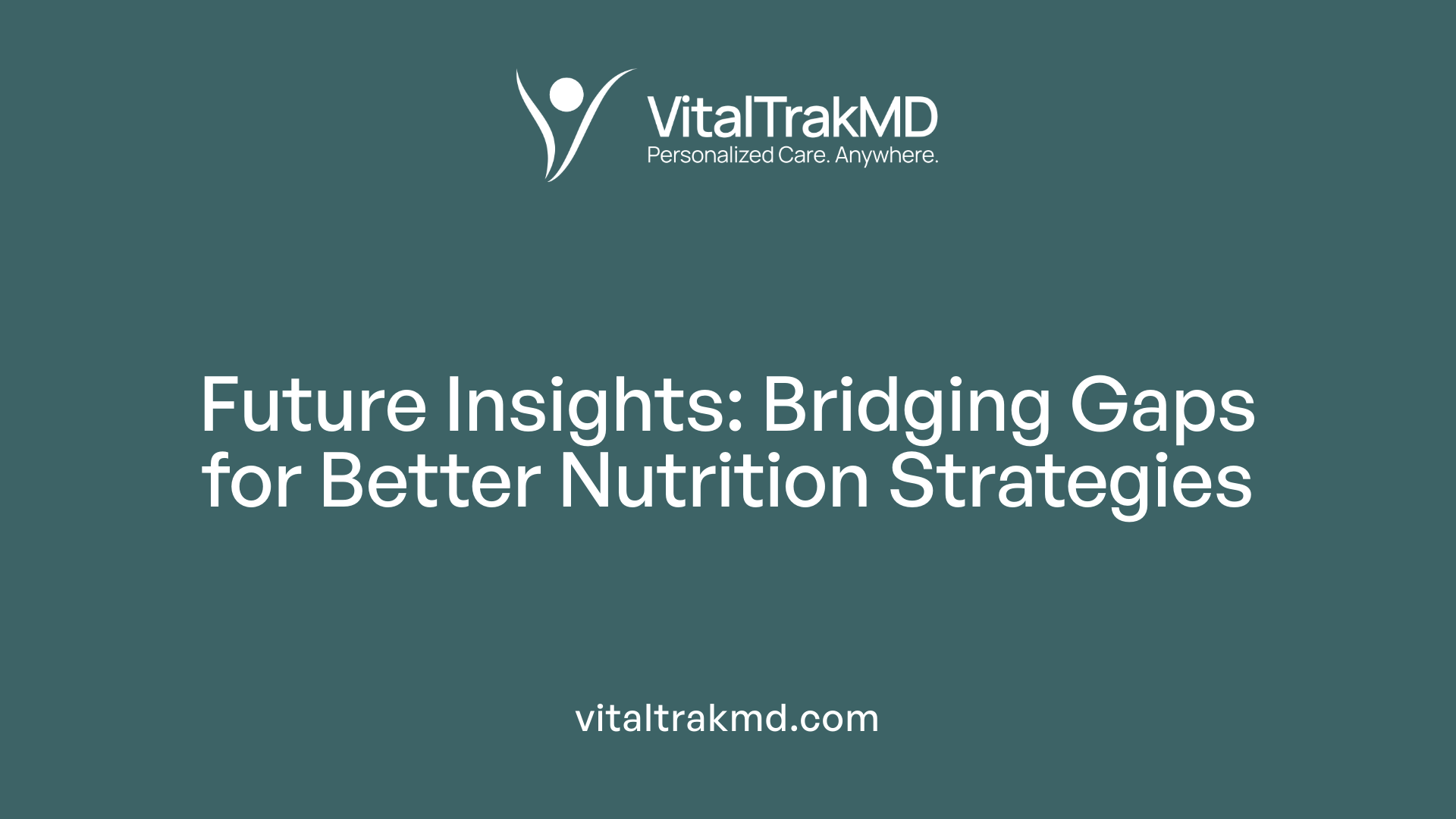
Why Is Targeted Research on Timing and Delivery of Interventions Needed?
Research has highlighted the effectiveness of nutrition interventions in improving health outcomes among older adults, but the optimal timing and delivery methods remain underexplored. Identifying when and how to introduce nutritional education and support can maximize benefits, especially given the diverse physiological changes in aging populations. Programs like HWePS, incorporating technology and community engagement, illustrate innovative delivery but need further study to determine best practices for sustained impact.
How Can Health Disparities in Nutrition Be Addressed?
Current nutrition programs often overlook disparities driven by socioeconomic status, race, and community resources. Interventions must focus on social determinants of health by building community capacity and fostering participation. By targeting urban, low-income, and ethnically diverse populations—as done in recent integrated programs—research can develop tailored strategies that reduce health inequities and improve nutrition-related outcomes in aging.
Why Are Culturally Tailored Approaches Essential?
The older adult population is increasingly heterogeneous in cultural and social backgrounds. Nutrition interventions that incorporate cultural preferences and social contexts are more likely to be accepted and effective. Workshops identifying research gaps emphasize the need for personalized dietary guidance respecting diversity. Integrating culturally sensitive education into health literacy and peer support components enriches programs and helps bridge gaps in adherence.
Developing research that strategically addresses these aspects—timing, disparities, cultural tailoring—will significantly enhance the effectiveness of nutrition strategies, supporting healthy aging on a broader scale.
| Focus Area | Importance | Examples from Research |
|---|---|---|
| Timing and Delivery | Maximize intervention impact over time | HWePS digital and coaching methods |
| Addressing Health Disparities | Ensure equitable nutrition benefits | Targeting low-income urban seniors |
| Culturally Tailored Approaches | Improve adherence and relevance of programs | Incorporating community culture in education |
Implementing Hybrid Healthcare Models at Scale: Challenges and Opportunities
Technological Infrastructure and Accessibility for Seniors
Scaling hybrid healthcare models like HWePS requires robust technological infrastructure tailored to older adults. Many seniors face barriers such as limited digital literacy, sensory impairments, and lack of access to reliable internet. Addressing these challenges demands user-friendly interfaces, training resources, and device accessibility to promote effective engagement with digital components of self-care and education.
Training Multidisciplinary Teams
Successful implementation depends on equipping healthcare professionals, nurses, peer supporters, and community workers with training on integrated care approaches. This includes understanding health literacy models, motivational coaching, and cultural competency. Multidisciplinary coordination is key to delivering personalized care management and fostering sustained behavioral change in nutrition and chronic disease management.
Sustaining Program Funding and Community Engagement
Long-term success hinges on securing ongoing funding and fostering community participation. Programs must demonstrate clinical benefits and improved quality of life to justify investments. Engaging diverse older adult populations culturally and socially ensures relevance and acceptance. Community initiatives developed through capacity-building empower residents, enhancing program resilience and sustainability in urban low-income settings.
Harnessing Hybrid Healthcare for Nutritional Empowerment in Seniors
Hybrid healthcare programs that combine technology with personalized, community-based support demonstrate significant potential in promoting lasting nutritional awareness and healthier behaviors among seniors. By addressing the complex and diverse needs of this growing population through tailored education, coaching, and social engagement, these programs contribute meaningfully to managing chronic diseases and improving quality of life. Continued research and expansion of hybrid healthcare initiatives promise to close existing gaps, ensuring that seniors receive the culturally sensitive and physiologically appropriate nutrition support essential for healthy aging.
References
- Sustainable effects of a hybrid self-care education program ...
- Promoting Healthy Aging through Nutrition: A Research ...
- Evaluation of a technology-enhanced, integrated community ...
- Study: Work-based Wellness Programs Reduce Weight
- Impact of a 12-week wellness coaching on self-care ...
- 10 Things About Long-Term Services and Supports (LTSS)
- What Makes a 'Good' Nursing Home? 10 Points to Consider
Recent articles
Want to Feel Better and Live Healthier?
Join hundreds of patients taking control of their health with personalized care that fits their life – not the other way around.
Rated 4.8/5 by 32+ customers







